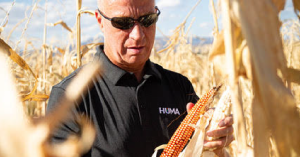“It won’t grow in the bag.” Grandpa never minced words. And that’s how he responded (in frustration) to my dad and uncle whenever they pondered dropping the planter. His philosophy was simple: the moment you can plant, you plant. There’s only so much heat and sunlight Mother Nature offers, so you better take her up on every minute of it. #Plant24 is already underway in much of the South, and many Midwest farmers are itching to get in the field. So when exactly do farmers start planting? There are several factors in play:
- Crop insurance dates. The green flag often drops on the start date of their federal crop insurance coverage. With crop insurance covering about 90% of row-crop acres, farmers are obliged to wait until the start date of their coverage. These dates vary greatly depending on the crop, where you farm and are based on risk of cold weather conditions. On my family farm in western Illinois, that’s April 5 for corn.
- Farm size. The more acres you farm, the earlier you start. Today’s big farming operations need to start early just to get everything in. They often subscribe to the mindset above of erroring on planting early and a little too wet, since you never know what Mother Nature has in store. Consequently, they may sacrifice optimum planting conditions, and optimum yield. But they deem the risk of waiting even worse.
- Soil temperature. Seeds of different crops are triggered to germinate at different soil temperatures. For corn, that’s 50 degrees; soybeans require 55 degrees; and cotton needs 64 degrees. You want to plant when the soil temperature is right for germination. Farmers can plant in slightly cooler soils if they are confident temperatures will soon rise. In my high-yield plots, I prefer a higher soil temperature for planting, with the belief that seeds will sprout and emerge quickly, then maintain great vigor (fast, uninterrupted growth). We have plenty of sun and heat in the South, so we have the luxury of waiting, whereas in the Midwest they need to capitalize on all the light and heat units they can acquire.
- Soil moisture. This is where planting is both an art and science. If you plant too wet, you risk causing soil compaction and surface crusting, which can adversely impact crop emergence. But too dry isn’t ideal either, as corn requires 30% soil moisture to germinate, soybeans require 50%. My method, passed down from Grandpa , no less: grab a handful of soil, make a fist, and if the soil forms a ball, it’s likely too wet to plant.
Low prices and high costs are seldom a formula for success. So it’s no wonder why farmers are not too excited about planting corn this year. But last week’s USDA planting intentions report caught even the pessimists off guard. Corn acres are predicted at 90 million acres; down 5% from last year and over 1.7 million acres below trade estimates. TWIA saw this coming, as many Southern farmers are contemplating other crops. And SEC country is where much of the decline is coming from, led by Arkansas and Mississippi with drops of 27% and 25%.
March Madness is at a fever pitch in farm country, as both the Purdue men and Iowa women’s basketball teams have advanced to the Final Four!
Related Posts

This Week in Ag #15
“Your rows sure are straight.” Those may have been the most pride-filling words I ever heard. They were first spoken to me by one of my landlords, Orville Larson, the spring after my dad passed away and all farming operations fell entirely on me. Orville made a habit of driving out to his farm to see

This Week in Ag #36
#Harvest23 is in full swing. You probably have a sense of what farmers are currently doing. But what are farmers currently thinking about? Well, at this time of the year… A LOT!

This Week in Ag #50
When explaining the carbon offset market, many of you have heard me give the example of companies and individuals purchasing carbon credits to “offset” their carbon footprints. By nature of what they do, some businesses such as airlines have no choice, as they’ll otherwise never come close to meeting self-imposed carbon footprint targets.

